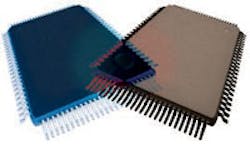Since the spring, the industry has been waiting to see results of National Instruments' acquisition of AWR Corp. A hint of what the combined entities can offer is provided in a short application note from AWR titled, "Linking RF Design and Test through AWR Software and National Instruments LabVIEW/T&M." It describes the benefits of using AWR's design software with NI's signal-processing software and virtual instruments. Essentially, the tools combine system simulation and baseband/RF/microwave test automation with the capability to simulate the performance of high-frequency circuits, linking simulations with test.
The design of today's wireless systems demands very tight integration between the baseband signal processing and high-frequency circuit design tools as well as test equipment for generating standards-based modulated waveforms and evaluating their effects on design performance. Thanks to today's software and test advancements, baseband signal processing, high-frequency design, and system verification software can be used together with hardware-based or virtual measurement systems. Such tools can aid designers as they struggle to overcome challenges, such as maintaining signal linearity over broad bandwidths while meeting the requirements of wireless standards like Long Term Evolution (LTE).
In the case of an RF power amplifier (PA) designed with AWR's Microwave Office software, for example, LabVIEW can create virtual instruments for further analysis of the simulated design. Alternately, it can generate the code needed to control real instruments to measure a prototype using standards-based LTE baseband signals. AWR's VSS software can be used to seamlessly create a system-level model for the circuit-based design from Microwave Officeeven to the extent of analyzing the effects of other components, such as filters or an antenna, on the performance of the amplifier.
The simulated amplifier's output is then passed back to LabVIEW to be demodulated. In addition, the baseband signal is analyzed. Ultimately, VSS can communicate with NI's vector signal generator and signal analyzer in addition to the PA under test. It can then bring the measured data back to Microwave Office for comparison with the simulations and analysis, thereby revealing any differences between them. To learn more, download a copy of the note, or click here for a detailed explanation of the benefits of linking LabVIEW with the Microwave Office suite of software tools.
AWR, 1960 E. Grand Ave., Ste. 430, El Segundo, CA 90245; (310) 726-3000, FAX: (310) 726-3005, www.awrcorp.com.
